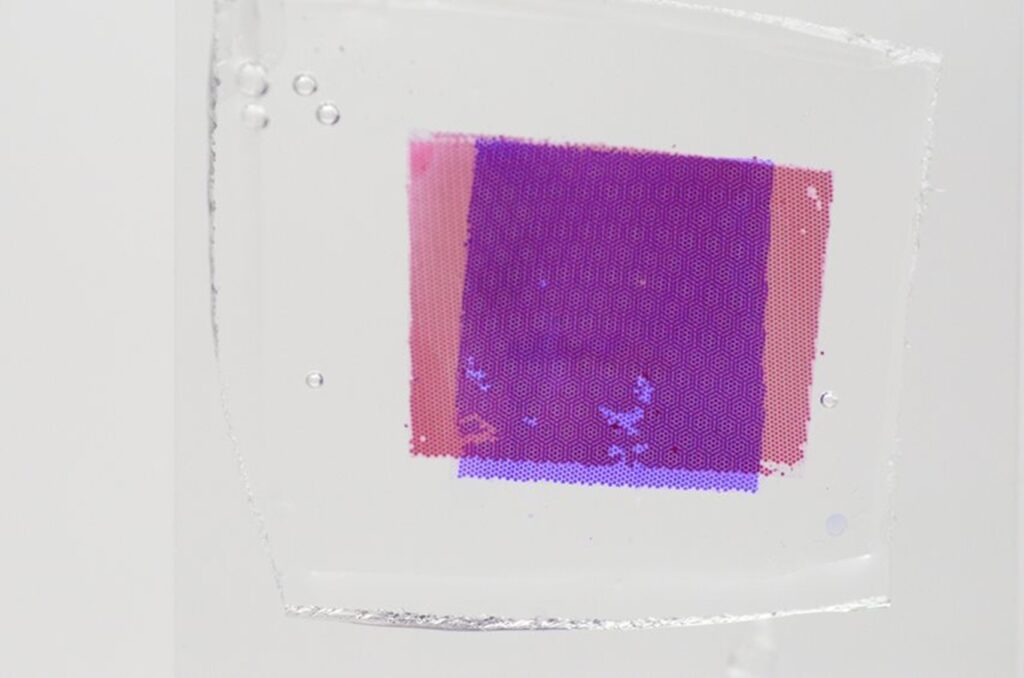
Inspired by the color-changing ability of cephalopods such as octopi and squid, University of Nebraska–Lincoln researchers are developing a material that could one day be used in sensors and soft robotics applications.
The skins of octopuses and their cephalopod brethren are some of the most colorful, high-definition, morphing displays evolution has produced, but it’s their ability to mimic their environment that most interests Stephen A. Morin, an Associate Professor in the Department of Chemistry at The University of Nebraska, Lincoln. Morin has created a stretchy silicone and hydrogel skin that can sense changes in its environment and transform accordingly without electricity.
Cephalopod skin is covered with chromatophore organs and tiny pigment sacks whose shape is controlled by radial muscles, allowing them to switch their camouflage quickly. Morin has traded those for microscopic arrays of hydrogels that sit on top of a silicone film.
These hyper-spongy, hyper-water-loving polymers can suck up enough of the wet material to become 95 percent water, as they can be sensitized to change shape when the light, temperature, or pH of their environment changes.
For their paper “Synthetic Chromatophores for Color and Pattern Morphing Skins,” which appeared in Advanced Materials last spring, temperature was the main focus. Though hydrogels were utilized instead of pigment sacks, their technique still borrows from the tentacled ocean dwellers.
“The cephalopod skins, and our skins, and digital print media, are fundamentally using some of the basic properties of halftoning,” said Morin. “Like the dots of a dot matrix printer, the dimensional arrays of gels look different when they change size and shape. So, when they’re fully expanded, they offer a larger fill fraction.”
This simple actuation could eventually give rise to a garment that reports body temperature, humidity, acidity and other factors, all at the same time. Soft robots could also display the state of these parameters, as could any tool or object wrapped in such a skin, all without a battery or a power cord. More complicated signaling could come to creation with multiple layers of hydrogel arrays.
“You can get some interesting interference effects between layers,” Morin said. “You can have regions of alignment and misalignment that give rise to interesting higher-level patterns that you wouldn’t get from just a single array.”
Essentially, the effect allows different parameter combinations for reading at a glance. Incorporating color into the mix will also give rise to many forms of environmentally responsive imaging. The more immediate goal of an unpowered sensing and color-shifting skin for soft robotics or wearables is more achievable.
“Ideally we would be able to make materials that can sense their environment, react to it, heal themselves when they’re broken and grow and shrink in response to some sort of a new need,” said Morin. “We would hope that our synthetic materials will execute all of those fundamental functions of sustainability and adaptability that we see in biology.”
SOURCE: America Society of Mechanical Engineers (ASME)
 TEXTILES.ORG
TEXTILES.ORG


